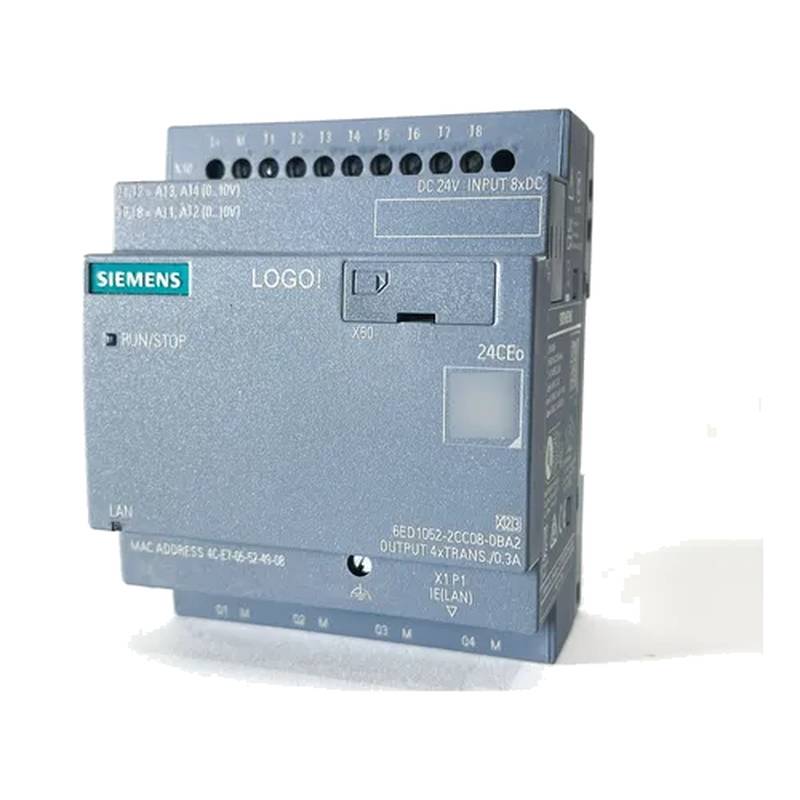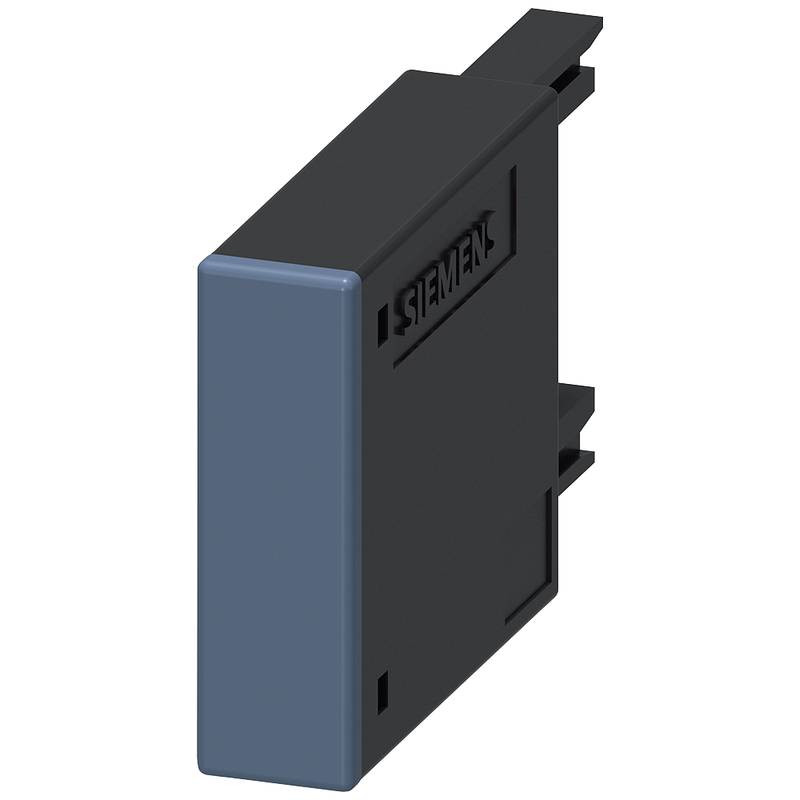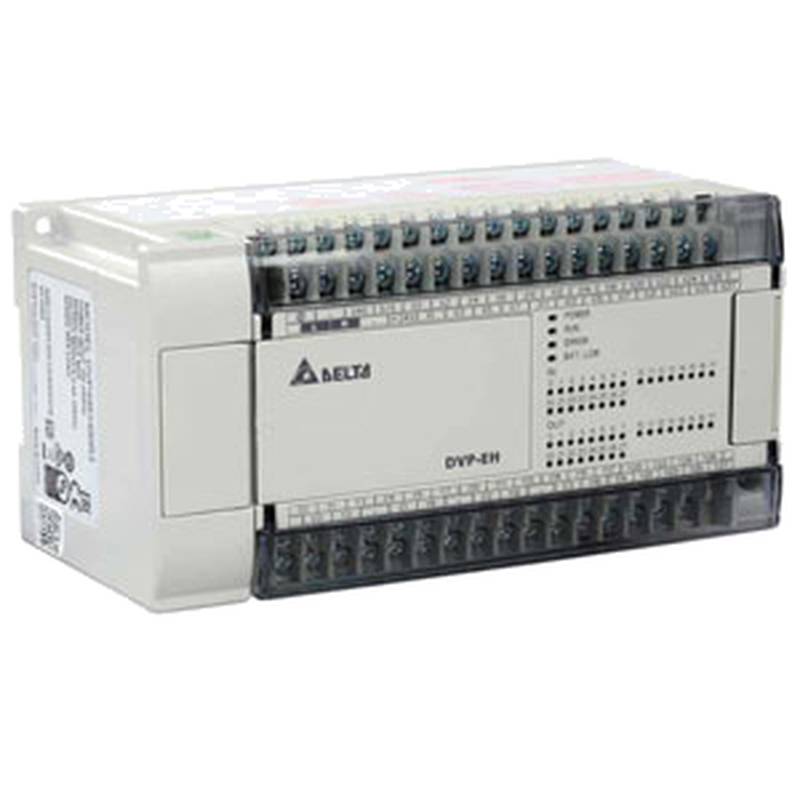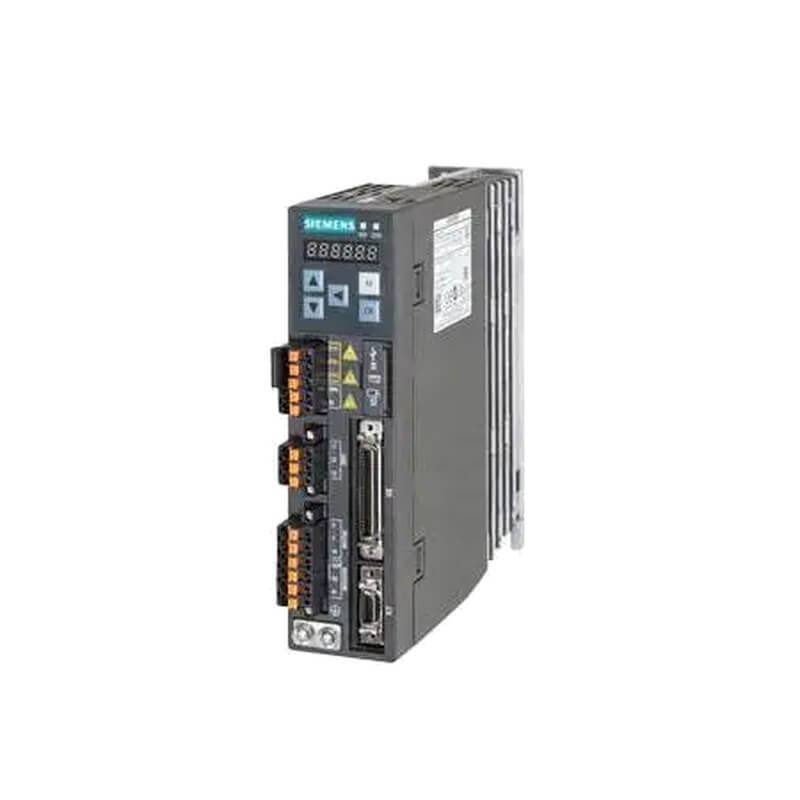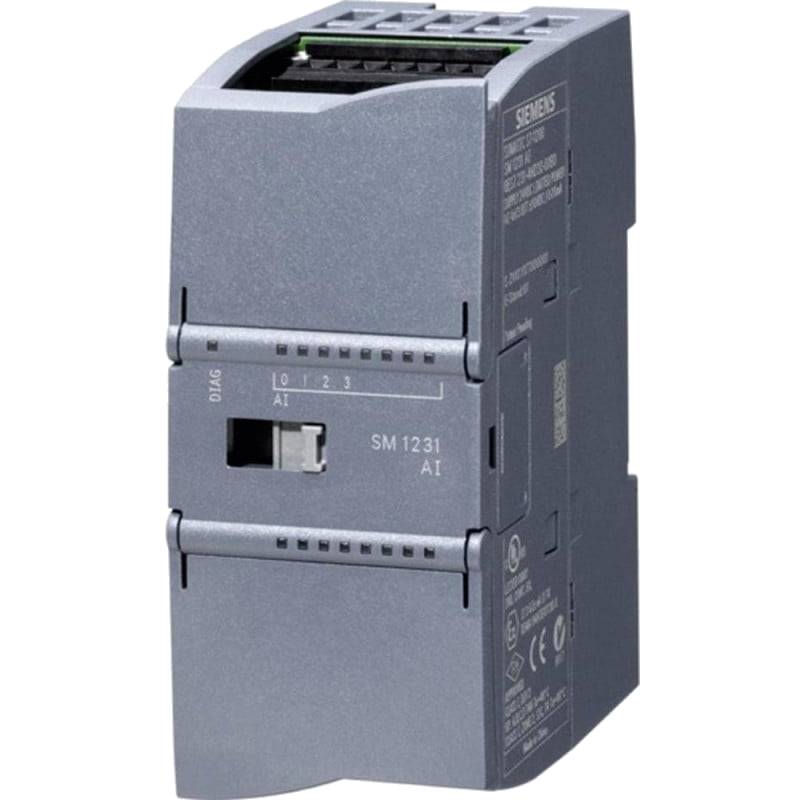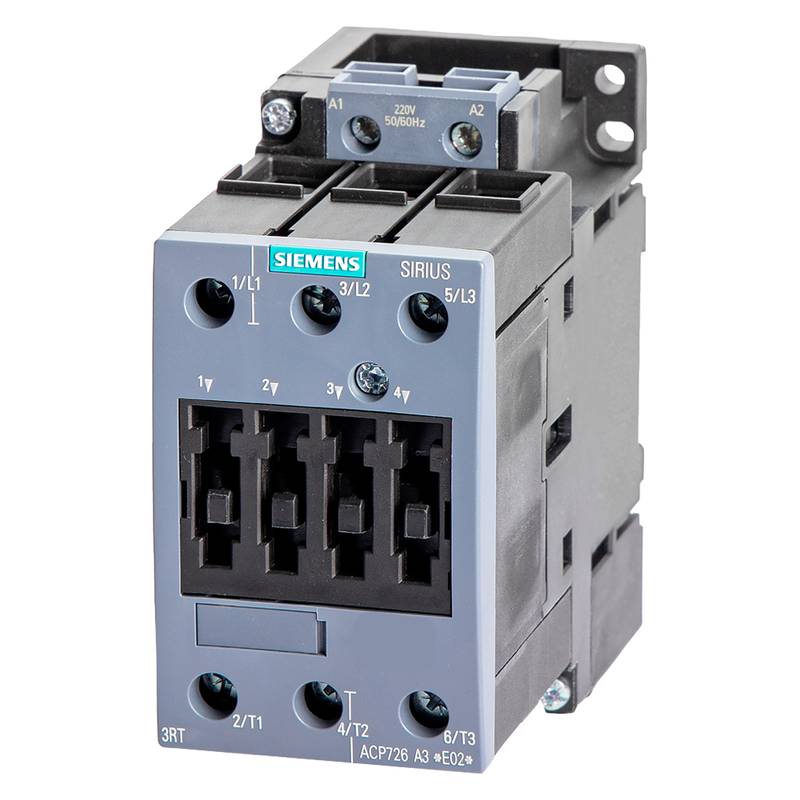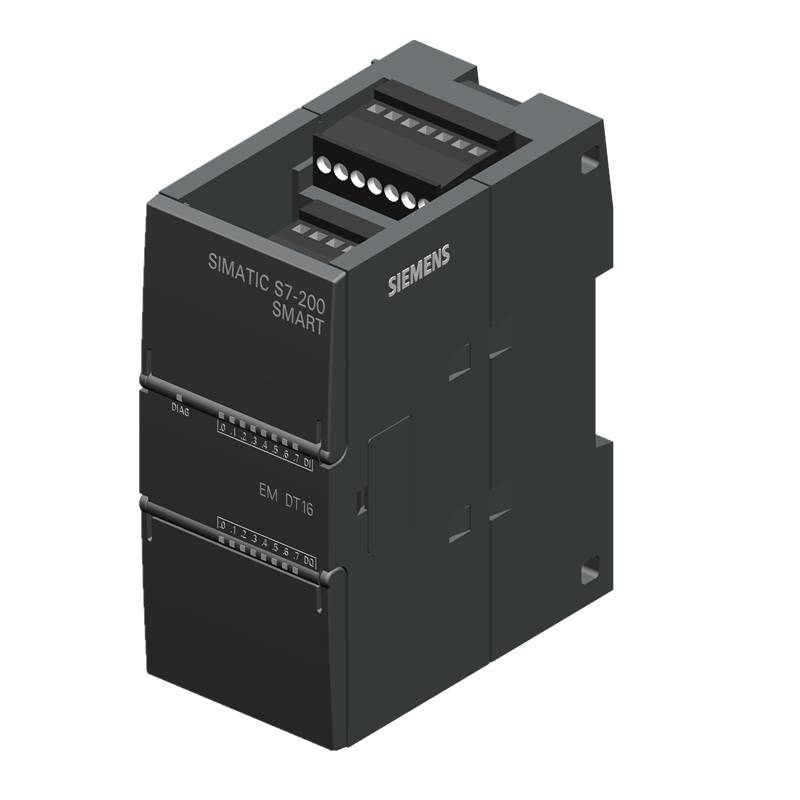
The Siemens 6ED1052-2CC08-0BA2 is an 8-point relay output module designed for Programmable Logic Controllers (PLCs), offering robust and reliable control for a wide range of industrial automation tasks. This module stands out for its high switching capacity, solid-state reliability, and seamless integration within Siemens' LOGO! modular system. Key technical specifications include an operating voltage of 24V DC, a maximum switching voltage of 250V AC, and a continuous load current of 5A per channel. Its compact design and DIN rail mountability facilitate easy installation in control cabinets.
Product Specifications
| Feature | Specification |
| :----------------------- | :----------------------------- |
| Product Type | Relay Output Module |
| Manufacturer | Siemens |
| Model Number | 6ED1052-2CC08-0BA2 |
| Number of Outputs | 8 |
| Output Type | Relay |
| Operating Voltage | 24V DC |
| Max. Switching Voltage | 250V AC |
| Continuous Load Current | 5A per channel |
| Max. Switching Frequency | 1 Hz (with inductive load) |
| Ambient Temperature | -20°C to +55°C |
| Mounting | DIN rail (35mm) |
| Dimensions (W x H x D) | 72mm x 90mm x 55mm |
Core Features & Market Positioning
The Siemens 6ED1052-2CC08-0BA2 distinguishes itself through its inherent reliability, a hallmark of Siemens industrial automation components. The use of relay outputs provides galvanic isolation between the control circuitry and the load, offering superior protection against voltage spikes and electrical noise. This makes it an ideal choice for applications requiring the switching of higher voltage or current loads, or where inductive loads with potential back EMF are present. Compared to solid-state outputs, relay outputs offer a wider switching voltage range and are generally more tolerant of overload conditions, positioning the 6ED1052-2CC08-0BA2 as a versatile and durable solution for demanding environments. Its integration into the LOGO! ecosystem further enhances its value by simplifying system design and expansion for users already invested in Siemens' compact controller solutions.
Key Application Scenarios
This 8-point relay output module is exceptionally well-suited for a variety of industrial automation tasks where robust switching capabilities are paramount. Common applications include the control of motors, pumps, valves, and lighting systems in manufacturing plants, building automation, and water treatment facilities. Its ability to switch AC loads up to 250V AC and handle a continuous current of 5A per channel makes it highly effective for managing power distribution and actuator control. Furthermore, its compatibility with the Siemens LOGO! platform makes it a go-to choice for machine builders and system integrators developing smaller, standalone automation solutions or expanding existing LOGO! based systems for enhanced control over multiple output devices.
Practical System Integration Guidance
Integrating the Siemens 6ED1052-2CC08-0BA2 into an automation system is straightforward, leveraging standard industrial practices. The module typically connects to the PLC's backplane or via a dedicated expansion bus, depending on the LOGO! base unit. Wiring the relay outputs involves connecting the common terminal (COM) to the appropriate voltage source and then routing each individual output (Q1-Q8) to the respective load. It is crucial to adhere to the maximum switching voltage and current ratings to prevent module damage. For programming, users will configure these relay outputs within the LOGO!Soft Comfort software, assigning them to specific logical functions or I/O addresses within the PLC program. Ensuring proper grounding and strain relief for all wiring is essential for long-term operational integrity and electrical safety.
Operation and Risk Mitigation
Safe and efficient operation of the Siemens 6ED1052-2CC08-0BA2 hinges on adhering to its operational parameters and implementing proper risk mitigation strategies. Overloading any of the 8 relay outputs beyond the 5A continuous current rating can lead to premature contact wear, overheating, and potential module failure. Users must also be mindful of the 250V AC maximum switching voltage, ensuring that connected loads do not exceed this limit. For inductive loads, such as motors or solenoids, incorporating appropriate freewheeling diodes or RC suppression circuits is vital to protect the relay contacts from voltage spikes generated when the load is de-energized. Regular visual inspection of wiring for signs of wear or damage, alongside periodic testing of output functionality, can help preemptively identify and address potential issues, minimizing downtime and ensuring system safety.
Scalability & Long-Term Value
The Siemens 6ED1052-2CC08-0BA2 offers significant long-term value through its inherent scalability and compatibility within the broader Siemens industrial automation portfolio. As part of the LOGO! modular system, it allows for easy expansion of output capabilities by simply adding more output modules to the base unit, up to the maximum supported by the specific LOGO! model. This modularity ensures that systems can grow with evolving production demands without requiring a complete overhaul of the control hardware. Furthermore, Siemens' commitment to backward compatibility and ongoing support for its industrial products means that integrating this module into existing or future automation architectures, including those potentially incorporating Industrial Internet of Things (IIoT) or Industry 4.0 solutions, provides a secure and future-proof investment.
Frequently Asked Questions
What is the maximum load current for the Siemens 6ED1052-2CC08-0BA2?
The Siemens 6ED1052-2CC08-0BA2 module supports a continuous load current of 5A per channel. This rating is crucial for selecting appropriate wiring and ensuring the longevity of the relay contacts. Exceeding this limit can lead to overheating and premature failure of the module.
Can this module switch AC and DC loads?
This relay output module is designed primarily for switching AC loads, with a maximum switching voltage of 250V AC. While relays can often switch DC, it is not their optimal application and requires careful consideration of load characteristics to prevent arcing.
How do I wire the Siemens 6ED1052-2CC08-0BA2 module?
Wiring involves connecting the common (COM) terminals to the power source and then connecting each individual output (Q1-Q8) to the respective load. Ensure proper grounding and use appropriate gauge wiring for the expected current.
What is the operating voltage of the Siemens 6ED1052-2CC08-0BA2?
The operating voltage for this module is 24V DC. This is the voltage required for the PLC to energize the relays and control the outputs. It is essential to supply the correct voltage to the module for proper function.
How many outputs does the 6ED1052-2CC08-0BA2 provide?
The Siemens 6ED1052-2CC08-0BA2 module provides a total of 8 relay outputs. These outputs can be independently controlled by the PLC program to switch external devices on or off.
Is this module compatible with all Siemens LOGO! base units?
This module is designed for use with specific Siemens LOGO! base units that support expansion modules. Compatibility should always be verified against the technical documentation of the specific LOGO! base unit being used.
What are the dimensions of the 6ED1052-2CC08-0BA2?
The module has dimensions of approximately 72mm in width, 90mm in height, and 55mm in depth. These compact dimensions allow for space-saving installation on a standard 35mm DIN rail.
What is the maximum switching frequency for this relay output?
The maximum switching frequency is rated at 1 Hz when switching inductive loads. For resistive loads, a higher frequency might be possible, but it's best to consult the full technical specifications for detailed guidance.
How does this module protect against electrical noise or surges?
The relay outputs provide galvanic isolation, which inherently separates the control circuit from the load circuit. This isolation helps to protect the PLC from voltage spikes and electrical noise generated by the controlled devices.
Can I use this module for high-frequency switching applications?
No, this relay output module is not designed for high-frequency switching applications. Its mechanical nature limits its switching speed, making it suitable for standard industrial control tasks rather than rapid signal toggling.














